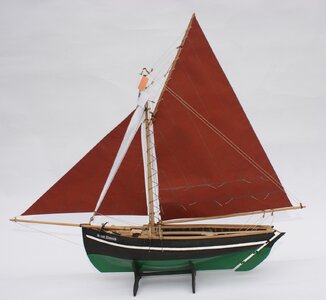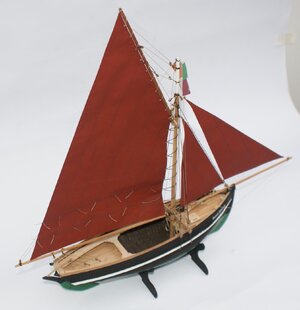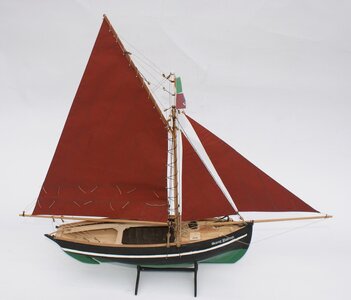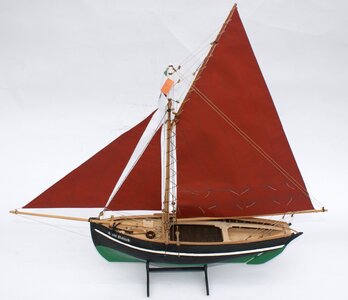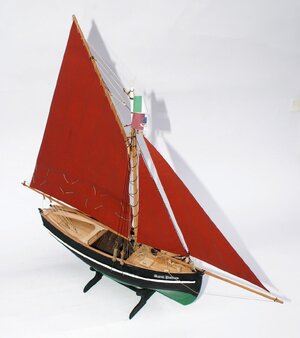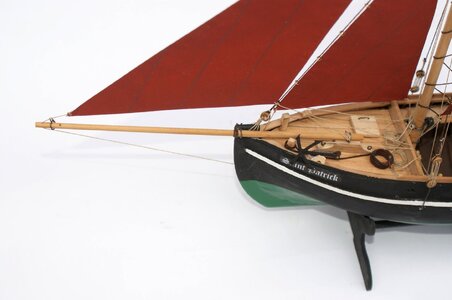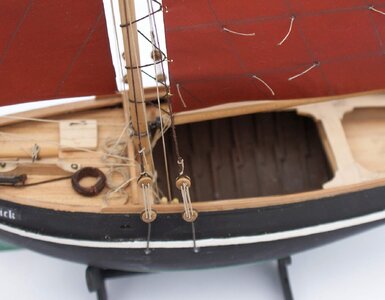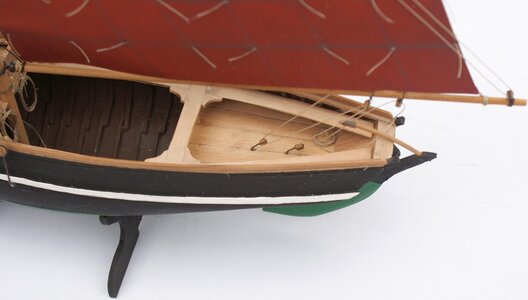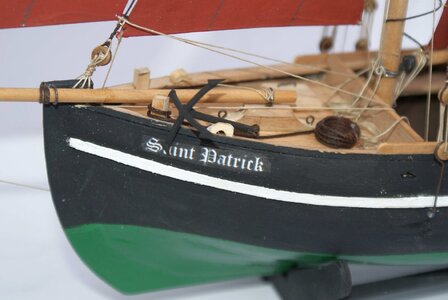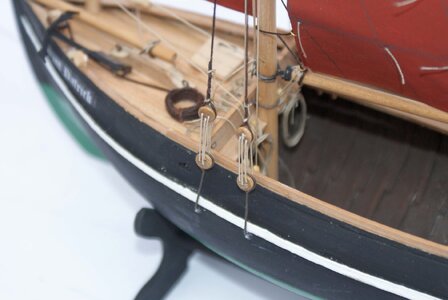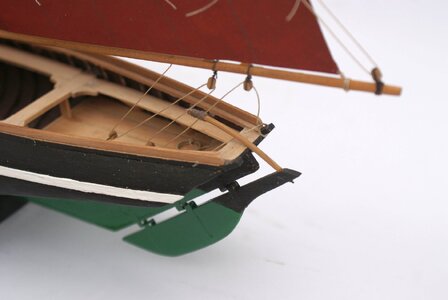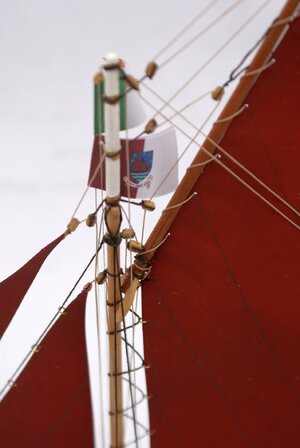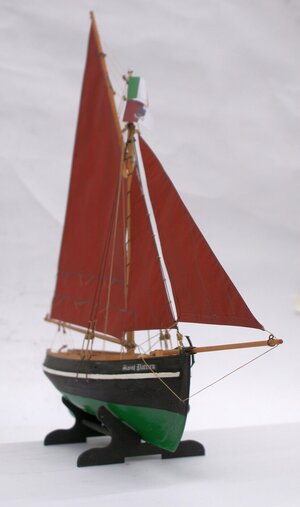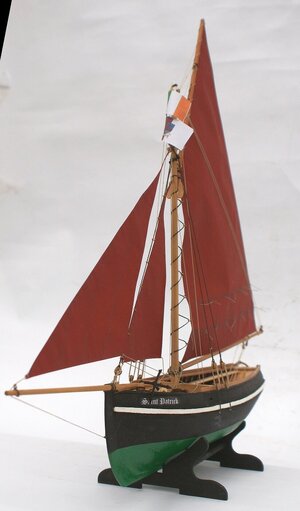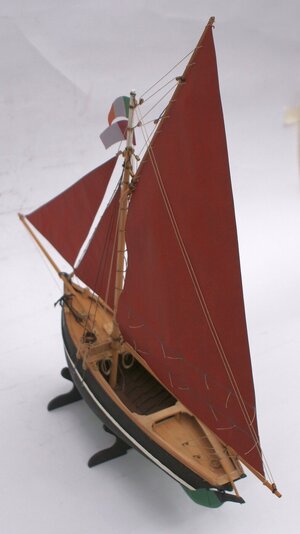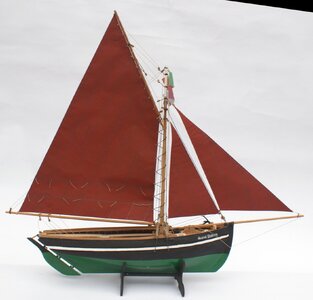Yep, another small fishig boat ....
Saint Patrick, Húicéir (irish) o Galway Hooker (Part 1)
1 Preface
I finished the “Reines des Fleurs” and slowly started another model that I had pre-cut, it has the size and similarities of the “Cariad” pilot cutter that I made a few years ago, and also a pleasant shape. I mean “St. Patrick” who is a húicéir (in Irish), but from now on we will call him a Galway Hooker, which is his best known name.
The model was taken from the book “Le Modelisme Naval- Plans, Styles et Techniques”: Several passages that I include below - in quotes - are by Jean-Pierre Guillot published in the magazine Chesse Maree Nº 5 and a remembrance by Paddy Barry owner of the ship. This ship was built in 1909 by Pat & Joe Casey of Galway, rebuilt between 1974 and 1979 by P. Barry until she was lost when she broke moorings in 2002 in a storm in West Cork.
UN VOILIER IRLANDAIS QUI REFUSE DE MOURIR : LE HOOKER
“The Galway Hooker (húicéir in Irish) is a traditional boat characteristic of the coasts of Galway Bay and Connemara. This beautiful vessel, robust yet elegant and agile, has now become an accepted icon of Connemara's cultural heritage. Specially developed for navigating the insidious waters of Connemara's rugged coastline, the hooker has a shallow draft; The hull is generally half-deck, except in the smallest boat - the Púcán - which is an open boat. The internal ballast is mainly made up of local stones, carefully selected and skillfully arranged amidships. Depending on the length and type of tackle, hookers are distinguished into four classes:
1. Bád Mór (Big Ship): length 10.5 to 13.5 meters (35 to 44 feet)
2. Leath Bhád (Half boat): length approx. 10 meters (32 feet)
3. Gleoiteog: length 7 to 9 meters (24 to 28 feet); this class is further divided into Gleoiteog Mhór and Gleoiteog Bheag for racing purposes.
4. Púcán: length 7 to 9 meters (24 to 28 feet)
“The St. Patrick began in 1909 as a cargo ship specially designed to carry 12 to 15 tons under sail. Now its same functionality and shape serve it well as a cruising sailboat. She participates in the occasional race and responds to intense driving. She won the All Ireland Hooker Championship in 1980 and also competed in the Kinvarra Regatta. Hookers were not only utilitarian vessels, used for hook and line fishing, but also played an important role in the transport and trade of many goods, such as grass, seaweed, livestock, limestone and general supplies throughout Connemara, extending their travels to relatively distant places. like Kinvara and Ballyvaughan.”
“At the turn of the century, before lorries rolled out onto the newly built roads of the Connemara district of Galway, boats were the lifeblood of this community. The terrain was deeply marked by bays. Coastal islands abounded. Some of them were linked by bridges or causeways to the mainland. Others, such as the Aran Islands, 19 kilometers out to sea in the Atlantic, were only accessible in good weather. The city of Galway was about 40 miles to the east. Goods and people traveled universally by ship. Sailing boats and rowboats operated locally. Medium-sized Pucanos and Gleoteogs, in the 20 to 30 foot size range, carried 3 to 5 tons. The Hookers of 35-40' in length and capacity of 1 to 15 tons were the equivalent of the 40' articulated trucks that circulate on the roads today”
“The construction is made of larch on frames of grown oak. The racks and crossmast boom and sail gaff are oak. The keel is 30' long. All hardware is wrought iron. The nails that support the structural members are usually three-quarters of an inch and the nails are believed to have come from Scotland. Local blacksmiths would have made the iron chains and tackle.”
“These ships were built without plans. But they were by no means built without forms. Templates of previous ships would have been retained so that modifications in shape or size would have been made with reference to previous models and performance. The caulking was oak tow. Black tar provided the final treatment. A high-billed gaff mainsail was loose on the boom and laced to the mast. Two headsails, the main of which rested on an unstayed bowsprit, complemented the mainsail. “They were all made of calico or linen, cut and made locally.”
2.References
“Le Modelisme Naval- Plans, Styles et Techniques” – Chasse- Maree et Francois Renault.
“Un voilier irlandais qui refuse de mourir : Le Hooker” Revista Chasse-Maree Nº 5 Octubre 1983 per Jean Pierre Guilllou

 www.facebook.com
www.facebook.com

 en.wikipedia.org
en.wikipedia.org

 www.galwaytourism.ie
https://www.galwayhookersailingclub.ie/
www.galwaytourism.ie
https://www.galwayhookersailingclub.ie/
Hooker Saint Patrick (youtube.com)
Bádóirí - photographing the last of the Galway hooker men (youtube.com)
The Galway Hooker | Connemara Irish
3. Building the model
The main idea of this project is to follow the plans of the indicated references, the general lines are available and there is also complementary information on the internet, with photos and videos of the reconstructed ship, from which I will obtain details of the roof, colors of the dead work and sails. There is no exact detail of the rigging, ropes, sheets, so various videos have been followed on YouTube that show these boats with good detail and explanation.
From the plans and lines of the hull, the sections for the frames, the shape of the deck and the dimensions of the sails and rigging were obtained. It was drawn in Autocad and with the PDF file obtained, the false keel, frames and main parts were laser cut on a 3 mm plywood sheet. Once the cut plates are available, the parts are disassembled, sanded and presented; They are glued with white glue, realigned and mounted on a frame. . Afterwards, the frames will be sanded to shape them and receive the 5mm strakes.
2x5 mm cedar strakes were used for the entire hull up to the bow. I sanded and puttyed twice, the first time with a mixture of sawdust, white rubber and putty, the second time with an acrylic base. Before painting, the false keel and false frames were removed from the central part of the boat and the frames were assembled with 2x2 mm bent rods. The cellar thus formed was painted with an earthy brown color; The living work was painted in an “Irish green” and the dead work in black.
The roofs continue to be made with 0.5 mm veneer strips glued on 1.5 mm thin plywood. Also using Autocad, the dimensions of other minor elements were taken and redrawn freehand on a workbook. The various elements of the deck and rigging will be left in wood without painting or varnishing. The various masts were prepared such as the bowsprit, the mainmast, the gaff and the boom, the rudder, the hold entrance, the anchor; all of which were fixed to the deck. The 3mm deadeyes were fixed, 0.6mm dark waxed thread shrouds will be used.
The sails were cut to the measurements obtained from the plan and are made of white paper, with two layers of paint on both sides. The typical color of hookers was used, which is a dark orange-red. The ropes of different caliber, dark 0.6 mm for the shrouds, light colored 0.45 mm for the labor rigging.
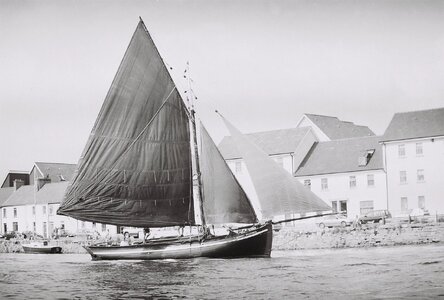
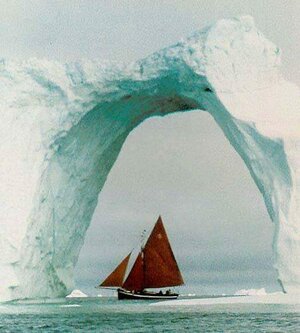
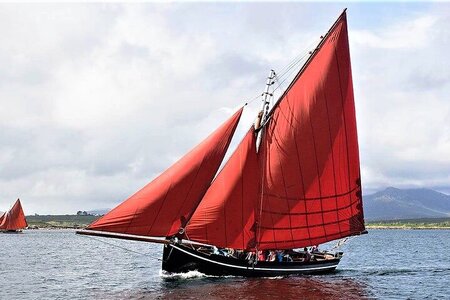
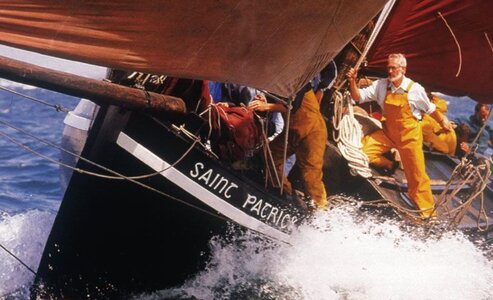
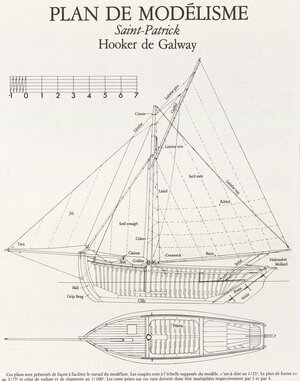
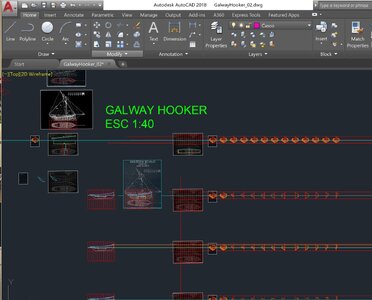
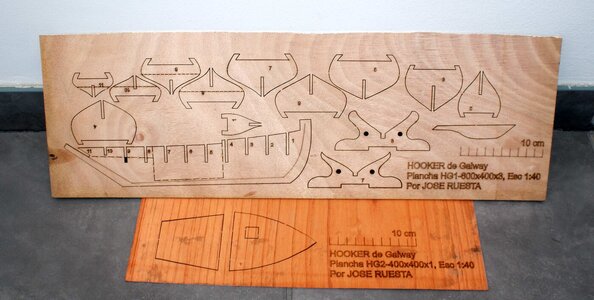
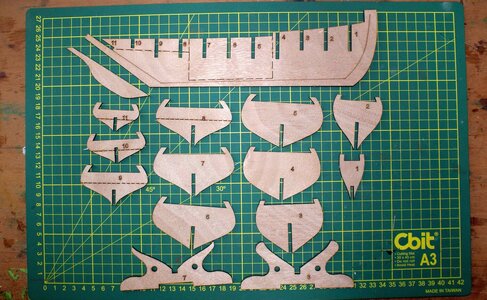
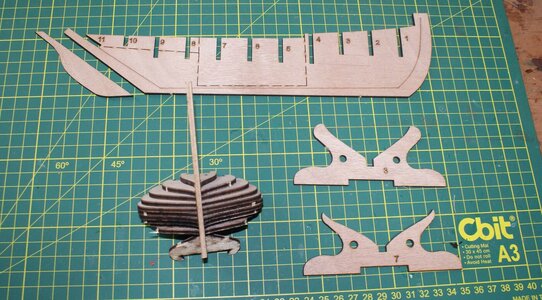
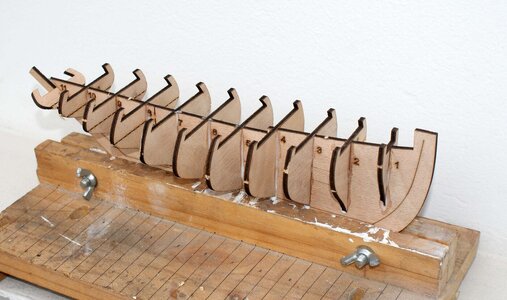
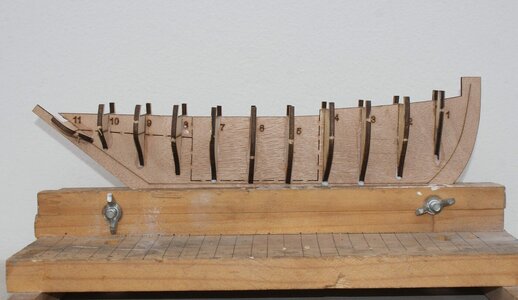
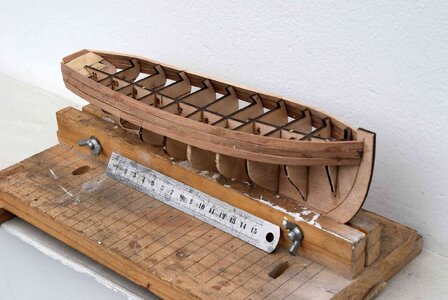
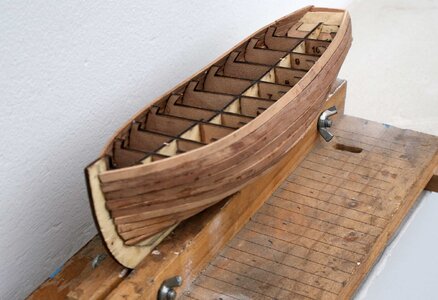
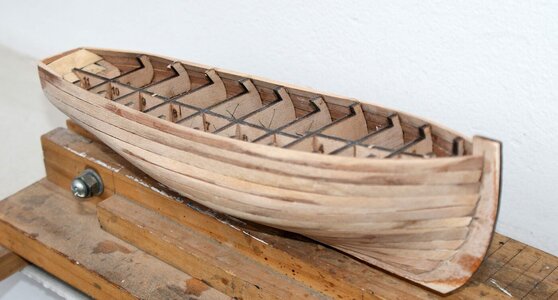
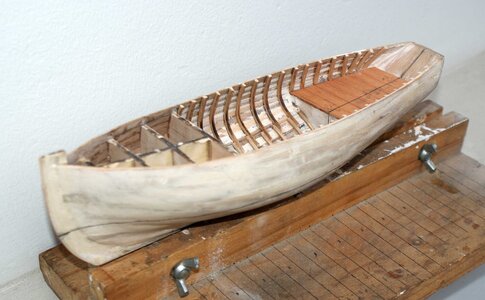
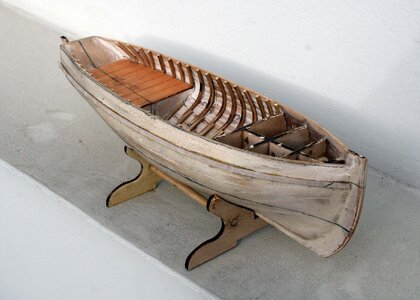
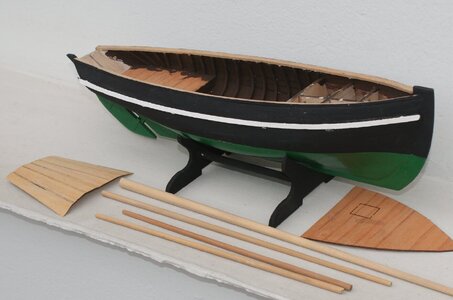
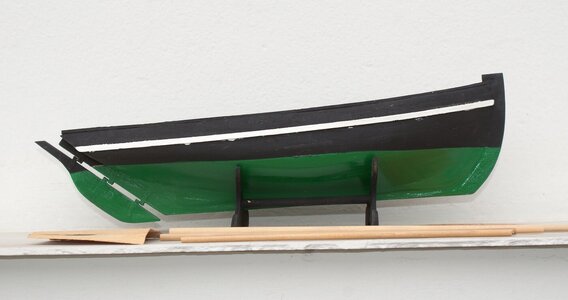
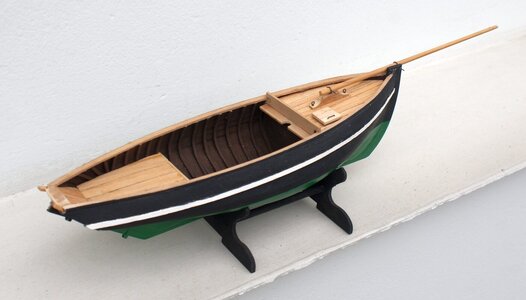
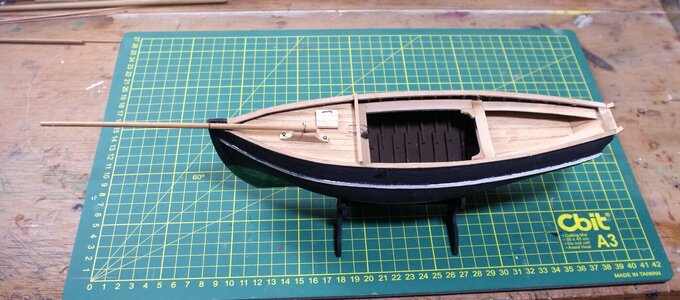
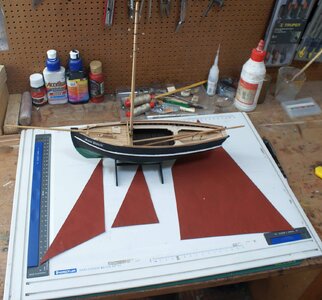
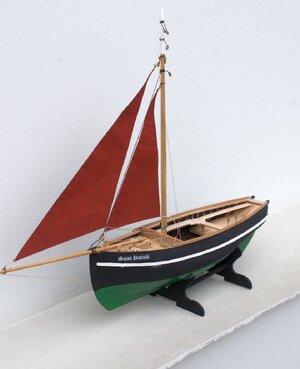
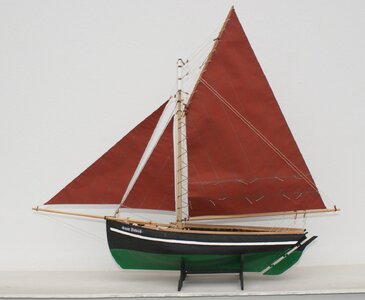
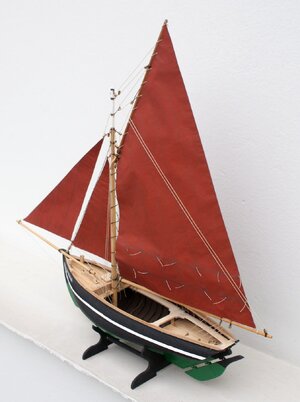
Saint Patrick, Húicéir (irish) o Galway Hooker (Part 1)
1 Preface
I finished the “Reines des Fleurs” and slowly started another model that I had pre-cut, it has the size and similarities of the “Cariad” pilot cutter that I made a few years ago, and also a pleasant shape. I mean “St. Patrick” who is a húicéir (in Irish), but from now on we will call him a Galway Hooker, which is his best known name.
The model was taken from the book “Le Modelisme Naval- Plans, Styles et Techniques”: Several passages that I include below - in quotes - are by Jean-Pierre Guillot published in the magazine Chesse Maree Nº 5 and a remembrance by Paddy Barry owner of the ship. This ship was built in 1909 by Pat & Joe Casey of Galway, rebuilt between 1974 and 1979 by P. Barry until she was lost when she broke moorings in 2002 in a storm in West Cork.
UN VOILIER IRLANDAIS QUI REFUSE DE MOURIR : LE HOOKER
“The Galway Hooker (húicéir in Irish) is a traditional boat characteristic of the coasts of Galway Bay and Connemara. This beautiful vessel, robust yet elegant and agile, has now become an accepted icon of Connemara's cultural heritage. Specially developed for navigating the insidious waters of Connemara's rugged coastline, the hooker has a shallow draft; The hull is generally half-deck, except in the smallest boat - the Púcán - which is an open boat. The internal ballast is mainly made up of local stones, carefully selected and skillfully arranged amidships. Depending on the length and type of tackle, hookers are distinguished into four classes:
1. Bád Mór (Big Ship): length 10.5 to 13.5 meters (35 to 44 feet)
2. Leath Bhád (Half boat): length approx. 10 meters (32 feet)
3. Gleoiteog: length 7 to 9 meters (24 to 28 feet); this class is further divided into Gleoiteog Mhór and Gleoiteog Bheag for racing purposes.
4. Púcán: length 7 to 9 meters (24 to 28 feet)
“The St. Patrick began in 1909 as a cargo ship specially designed to carry 12 to 15 tons under sail. Now its same functionality and shape serve it well as a cruising sailboat. She participates in the occasional race and responds to intense driving. She won the All Ireland Hooker Championship in 1980 and also competed in the Kinvarra Regatta. Hookers were not only utilitarian vessels, used for hook and line fishing, but also played an important role in the transport and trade of many goods, such as grass, seaweed, livestock, limestone and general supplies throughout Connemara, extending their travels to relatively distant places. like Kinvara and Ballyvaughan.”
“At the turn of the century, before lorries rolled out onto the newly built roads of the Connemara district of Galway, boats were the lifeblood of this community. The terrain was deeply marked by bays. Coastal islands abounded. Some of them were linked by bridges or causeways to the mainland. Others, such as the Aran Islands, 19 kilometers out to sea in the Atlantic, were only accessible in good weather. The city of Galway was about 40 miles to the east. Goods and people traveled universally by ship. Sailing boats and rowboats operated locally. Medium-sized Pucanos and Gleoteogs, in the 20 to 30 foot size range, carried 3 to 5 tons. The Hookers of 35-40' in length and capacity of 1 to 15 tons were the equivalent of the 40' articulated trucks that circulate on the roads today”
“The construction is made of larch on frames of grown oak. The racks and crossmast boom and sail gaff are oak. The keel is 30' long. All hardware is wrought iron. The nails that support the structural members are usually three-quarters of an inch and the nails are believed to have come from Scotland. Local blacksmiths would have made the iron chains and tackle.”
“These ships were built without plans. But they were by no means built without forms. Templates of previous ships would have been retained so that modifications in shape or size would have been made with reference to previous models and performance. The caulking was oak tow. Black tar provided the final treatment. A high-billed gaff mainsail was loose on the boom and laced to the mast. Two headsails, the main of which rested on an unstayed bowsprit, complemented the mainsail. “They were all made of calico or linen, cut and made locally.”
2.References
“Le Modelisme Naval- Plans, Styles et Techniques” – Chasse- Maree et Francois Renault.
“Un voilier irlandais qui refuse de mourir : Le Hooker” Revista Chasse-Maree Nº 5 Octubre 1983 per Jean Pierre Guilllou

The Days of the MV Naomh Éanna, Ireland
Remembering the Saint Patrick built in 1909 Construction method: Carvel Larch on Oak Construction material: Wood Hull type: Long keel deep forefoot Generic type: Galway Hooker Builder: Brothers,...
 www.facebook.com
www.facebook.com

Galway hooker - Wikipedia

The Galway Hooker Boats traditional fishing boats | Sail on a Galway Hooker
The Galway Hooker Boats | History of the iconic fishing vessel of Galway, with info on days tours and excursions on Galway Bay Ireland
Hooker Saint Patrick (youtube.com)
Bádóirí - photographing the last of the Galway hooker men (youtube.com)
The Galway Hooker | Connemara Irish
3. Building the model
The main idea of this project is to follow the plans of the indicated references, the general lines are available and there is also complementary information on the internet, with photos and videos of the reconstructed ship, from which I will obtain details of the roof, colors of the dead work and sails. There is no exact detail of the rigging, ropes, sheets, so various videos have been followed on YouTube that show these boats with good detail and explanation.
From the plans and lines of the hull, the sections for the frames, the shape of the deck and the dimensions of the sails and rigging were obtained. It was drawn in Autocad and with the PDF file obtained, the false keel, frames and main parts were laser cut on a 3 mm plywood sheet. Once the cut plates are available, the parts are disassembled, sanded and presented; They are glued with white glue, realigned and mounted on a frame. . Afterwards, the frames will be sanded to shape them and receive the 5mm strakes.
2x5 mm cedar strakes were used for the entire hull up to the bow. I sanded and puttyed twice, the first time with a mixture of sawdust, white rubber and putty, the second time with an acrylic base. Before painting, the false keel and false frames were removed from the central part of the boat and the frames were assembled with 2x2 mm bent rods. The cellar thus formed was painted with an earthy brown color; The living work was painted in an “Irish green” and the dead work in black.
The roofs continue to be made with 0.5 mm veneer strips glued on 1.5 mm thin plywood. Also using Autocad, the dimensions of other minor elements were taken and redrawn freehand on a workbook. The various elements of the deck and rigging will be left in wood without painting or varnishing. The various masts were prepared such as the bowsprit, the mainmast, the gaff and the boom, the rudder, the hold entrance, the anchor; all of which were fixed to the deck. The 3mm deadeyes were fixed, 0.6mm dark waxed thread shrouds will be used.
The sails were cut to the measurements obtained from the plan and are made of white paper, with two layers of paint on both sides. The typical color of hookers was used, which is a dark orange-red. The ropes of different caliber, dark 0.6 mm for the shrouds, light colored 0.45 mm for the labor rigging.


























